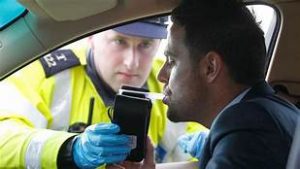Testing blood alcohol concentration (BAC) based on breath samples has been a staple of
roadside law enforcement since the late 1930s, when Prof. Rolla H. Harger of Indiana
University developed a device called the “drunkometer.” Drivers who fail the tests face
prosecutions for violating laws that prohibit driving with a certain BAC, which are
referred to as “per se” statutes. Per se DWI statutes do not require proof that the motorist’s ability to drive was affected
by alcohol: simply that at the time they operated a motor vehicle they had a BAC above a
set limit. But this indirect measurement of sampling breath to determine alcohol concentration in
the blood subjects the prosecution’s case to attack by defense counsel.
Of all the tests used to measure BAC, the simplest and most cost-effective is a breath test.
The scientific principle underlying the acceptance of this indirect measurement is
“Henry’s Law,” named for the chemist who defined it in 1803, William Henry.
Simply put, Henry’s Law predicts that if a volatile substance such as alcohol is dissolved
in some solvent, (such as blood) the concentration of the alcohol in the vapor above the
liquid (i.e., your breath) will be proportional to its concentration in the blood. Henry’s
Law requires a closed system where there is a constant pressure and a constant
temperature.
Expelled deep lung air is supposed to accurately reflect what a blood test might reveal
and has historically been considered sufficiently reliable to be admitted in court.
However, the government should be less concerned with whether the results of breath
testing may be admitted and more concerned with whether there are more reliable
methods of analysis which will strengthen their case.
While breath tests can reliably detect the presence of alcohol in the human body, it is less
clear that breath testing can determine an accurate quantitative analysis of alcohol in the
blood. The requirements of Henry’s Law; a closed system with constant pressure and constant
temperature, simply do not apply in the lungs. Variables in blood-to-breath ratios have
historically provided a fertile area of attack for defense counsel. Current scientific
research, published in respected peer-reviewed journals, now shows that results from
breath alcohol analysis or breath testing may not be sufficiently reliable for purposes of
quantitative analysis.
Steven Epstein is a founding partner at Barket, Epstein & Kearon, LLP and head of the firm’s DWI/Vehicular Crimes group. Mr. Epstein has more than 26 years of experience in the field of DWI and criminal defense. Mr. Epstein has extensive experience lecturing and teaching workshops and continuing legal education seminars for his peers and is relied upon as the principal instructor for the Legal Aid Society of New York City in the area of DWI defense. He has also served as an adjunct professor of law at the Pace University School of Law since 1998.
E mail Mr. Epstein at sepstein@barketepstein.com
